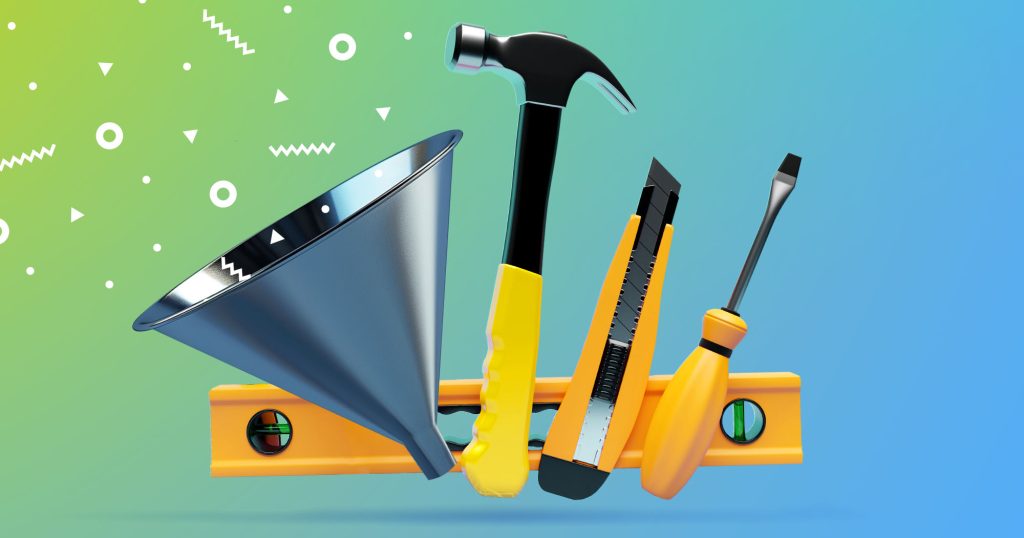Some of the biggest success stories in the world began with rejection.
Sir James Dyson was turned down by every appliance manufacturer in the UK and US. Jay-Z couldn’t get signed by a single record label. JK Rowling was turned away by 12 different publishers. Steven Spielberg couldn’t get into film school.
Yet they all overcame rejection to become icons in their fields. Was their enormous success due to luck?
No way.
They were successful because they were willing to perceive failure as an opportunity to learn.
And what they learned was that perseverance and strategy were the keys to achieving their goals.
So it goes with email outreach.
Rejection and slow-to-close sales leads are unfortunate realities with cold emailing. But each “no” is a hidden opportunity to have a deeper understanding of what your prospects want.
Considering the huge amount of rejection associated with email outreach, you’d think cold emailing would be a waste of time, yet:
-
- 78% of decision makers have taken an appointment or attended an event that came from an email or cold call (DiscoverOrg), and
- For every $1 spent, email marketing generates $38 in ROI (Campaign Monitor).
…Which means when done right, email outreach can be the single biggest source of revenue for a growing business.
So why do people keep ignoring and deleting your emails? And when you actually get a response, why do they reject you or keep you hanging?
Let’s take a look at some of the biggest reasons your cold emails fail to get a positive response and what lessons you can learn from them. By the end of this article, you’ll have five effective ways to turn every “no” into plenty of “yes’s.”
Reason #1: You gave up too soon.
Put yourself in your prospect’s shoes for a sec:
You’ve just had a meeting with a potential vendor. You’re interested in learning more, but you have a schedule packed with other tasks. You’ve asked them to send you more information, and they do so immediately after your meeting. You save the material in a “to-be-read” folder.
A few days later you receive a quick “just checking in” email from them. But you don’t have an answer for them yet because you’ve been so busy. You make a mental note to take a look later in the day, but an emergency meeting pops up and it just slips your mind.
You never hear from the vendor again. Which means they don’t value your business.
So you forget about them.
Be honest: how many times do you follow up with a prospect before you give up on them? Chances are:
- You hit “send” on an intro email,
- If you’re lucky you get a meeting (or a webinar signup or a phone consult),
- You write a quick follow up, and…
- You never hear back, so you move on.
You’re not alone in your half-hearted attempts at contact:
44% of sales reps give up after one follow-up email.
Yet 80% of sales result after 5 follow-ups.
And that’s AFTER having a meeting. Just getting a reply from a cold prospect takes at least 3 attempts.
If you’ve got hundreds of prospects to contact, is it even humanly possible to be that persistent?
Solution: Email Automation & Lead Nurturing
If you don’t already have an email automation platform, now is the time to sign up for one. An outbound email outreach campaign on an app like Reply will save you tons of time (and heartbreak) as you attempt to reach prospects.
And once you get that meeting, presentation or opt-in, you can trigger a lead nurturing campaign with your CRM so your prospect doesn’t fall between the cracks. The benefits of lead nurturing speak for themselves:
- Lead nurturing emails generate an 8% clickthrough rate compared to general email sends, which generate just a 3% CTR. [Source: HubSpot]
- Lead nurturing emails get 4-10 times the response rate compared to standalone email blasts. [Source: SilverPop/DemandGen Report]
- Companies that nurture leads make 50% more sales at a cost 33% less than non-nurtured leads. [Source: Forrester Research]
Okay, let’s say you’ve been persistent but your prospect still ignores you. Or they give you a flat-out “no thanks.”
There’s a good chance you’re fishing in the wrong pond.
Reason #2: They aren’t the right fit.
As I mentioned earlier, JK Rowling sent the manuscript of Harry Potter to twelve different publishers before it landed in the right hands.
Those hands didn’t belong to Bloomsbury’s editor. They belonged to the editor’s eight-year-old daughter, who fell in love with Rowling’s tale and couldn’t wait to read more.
It wasn’t until Harry Potter found its way to its target reader that anyone was willing to give it a chance.
What can you learn from this as an email marketer?
Be sure your message is reaching the right prospect.
According to Gleanster Research, only 25% of leads are legitimate.
If you’re an early stage B2B startup, qualifying leads can be tricky because you might not know who your target user is yet. How can you be sure your email is landing in the right inbox?
Solution: Create a targeted buyer persona
A buyer persona is a description of a fictional person that would make the ideal customer for your product. The more specific the user persona is, the better the chances you’ll have of landing more qualified leads:
- Using buyer personas in an email campaign can improve open rates by 2x and clickthrough rates by 5x. (MLT Creative)
- Buyer personas can contribute to a 175% increase in revenue attributed to marketing, 10% increase in leads sent to sales, and a 72% reduction in lead conversion time. (DemandGen Report)
Creating a buyer persona isn’t a matter of pulling vague ideas out of thin air. It takes in-depth, qualitative market research to come up with a laser-focused buyer persona. Once you have one, it will increase your chances of finding your ideal prospects.
So: you’ve followed up, you’re contacting the right decision-maker, but they’re still turning you down. Where’s the disconnect?
Reason #3: You don’t understand their needs.
Sales trainer Gower D. Talley once took a meeting with someone he titled The Worst Salesman in the World.
How did the guy earn such an unfortunate title?
Because he walked into Talley’s office (15 minutes late) and dove straight into a sales pitch for auto insurance. Despite the fact that Talley needed business liability insurance.
But the salesman didn’t know that.
Because he didn’t ask.
There’s a reason why they call it “cold-calling”: people don’t trust salespeople. Because more often than not, all a salesperson cares about is selling a product–not solving a problem.
- Customers believe that sales reps are 88% knowledgeable on product and only 24% on business expertise.
- 70% of people make purchasing decisions to solve problems. 30% make decisions to gain something. [Source: Impact Communications]
- Consider adding a short message in the email body using a screen recorder. Personalized emails improve click-through rates by 14%, and conversion rates by 10%. [Source: Aberdeen Group]
Sales relationships are built on trust, and the only way for a cold prospect to trust you is to feel understood.
Solution: Send emails that are focused on providing value and solving specific problems over selling products.
Instead of bulldozing your way into someone’s inbox demanding that your prospect click a link or book a meeting, you first need to show that you want to help them.
- Send an introductory email explaining why you’re contacting them and offering your assistance.
- End the email expressing an interest in further understanding what they’re working on and how you can help.
By the time your prospect agrees to a meeting, you’ll have deeper insights into how your product can personally benefit them and solve their problems.
Let’s say that you’ve done a great job of showing that you’re considerate of your prospect’s time and needs, yet they continue to ignore your emails. It could just be a matter of style.
Reason #4: You’re not grabbing their attention.
According to ContactMonkey, the average buyer gets 100+ emails a day, opens just 23%, and clicks on just 2% of them.
The biggest reason for opening emails: appealing subject lines.
The biggest reason for clicking on links in emails: relevance.
Solution: Better email copy & personalization.
Almost every marketing blog out there (including ours) has advice on how to write the perfect cold email. Here are some stats to give you an idea of what works:
- Personalized emails including the recipient’s first name in the subject line have higher open rates. [Source: Retention Science]
- Personalized emails improve click-through rates by 14%, and conversion rates by 10%. [Source: Aberdeen Group]
- Subject lines with more than 3 words experience a drop in open rate by over 60%.
- 40% of emails are read on mobile phones screens, which have a visibility of 4-6 words per line, max.
Alright: let’s say you’ve done everything you can to grab your prospects attention with appealing, personalized emails and you get a reply.
Hooray!
But…they keep putting you off.
They say they’re interested…but…
They’re working on a different project and will contact you when they’re ready to move forward.
You’ve found yourself being strung along by “The Slow Yes.”
What’s your prospect really trying to tell you?
Reason #5: They’re not ready…yet.
This is probably the most frustrating kind of rejection, because it’s not really rejection–or is it? Is this prospect worth fostering a relationship with?
Yes and no.
First of all, if you’ve done everything you can to build interest, communicate value, and create a sense of urgency and you just can’t get them to close, let them off the hook.
And let them know you’re letting them off the hook.
Tell them: “Look, I can see you’re interested in the product but I’m sensing the timing isn’t right for you.” Then ask them when they think a better time would be to circle back.
Chances are, you’ll see an immediate change in attitude from your Slow Yes prospect. What was once a guarded or indecisive tone will most likely become open and warm.
But don’t delete their contact info from your CRM yet. Just because they aren’t interested now doesn’t mean you can’t benefit from the relationship you’ve been building:
- 63% of people requesting information on your company today will not purchase for at least three months – and 20% will take more than 12 months to buy.
Solution: Email Segmentation & Content Marketing
A Slow Yes is a prospect who not only is a future customer, but with the right relationship-building, they’re also someone who could offer you further insights into how you can improve your product or your messaging.
Once you realize your prospect isn’t going to close any time soon:
- Add them to a segment of undecideds
- Include them in newsletters and surveys
- Offer them content assets like ebooks or webinars
- Check in with them to see what they’re up to, what their biggest problems are, and how you can help
In other words, keep them informed so they’ll keep you informed.
As you can see, there’s plenty of opportunity in rejection, if you’re willing to learn from it. I’m eager to see how your response rates change once you apply these tactics to your cold emails. Shoot me an email: oleg@reply.io



![Upselling and Cross-selling: The Go-To Guide [+7-Step Framework Inside] Upselling and Cross-selling: The Go-To Guide [+7-Step Framework Inside]](https://reply.io/wp-content/uploads/upsale-1024x538.jpg)

